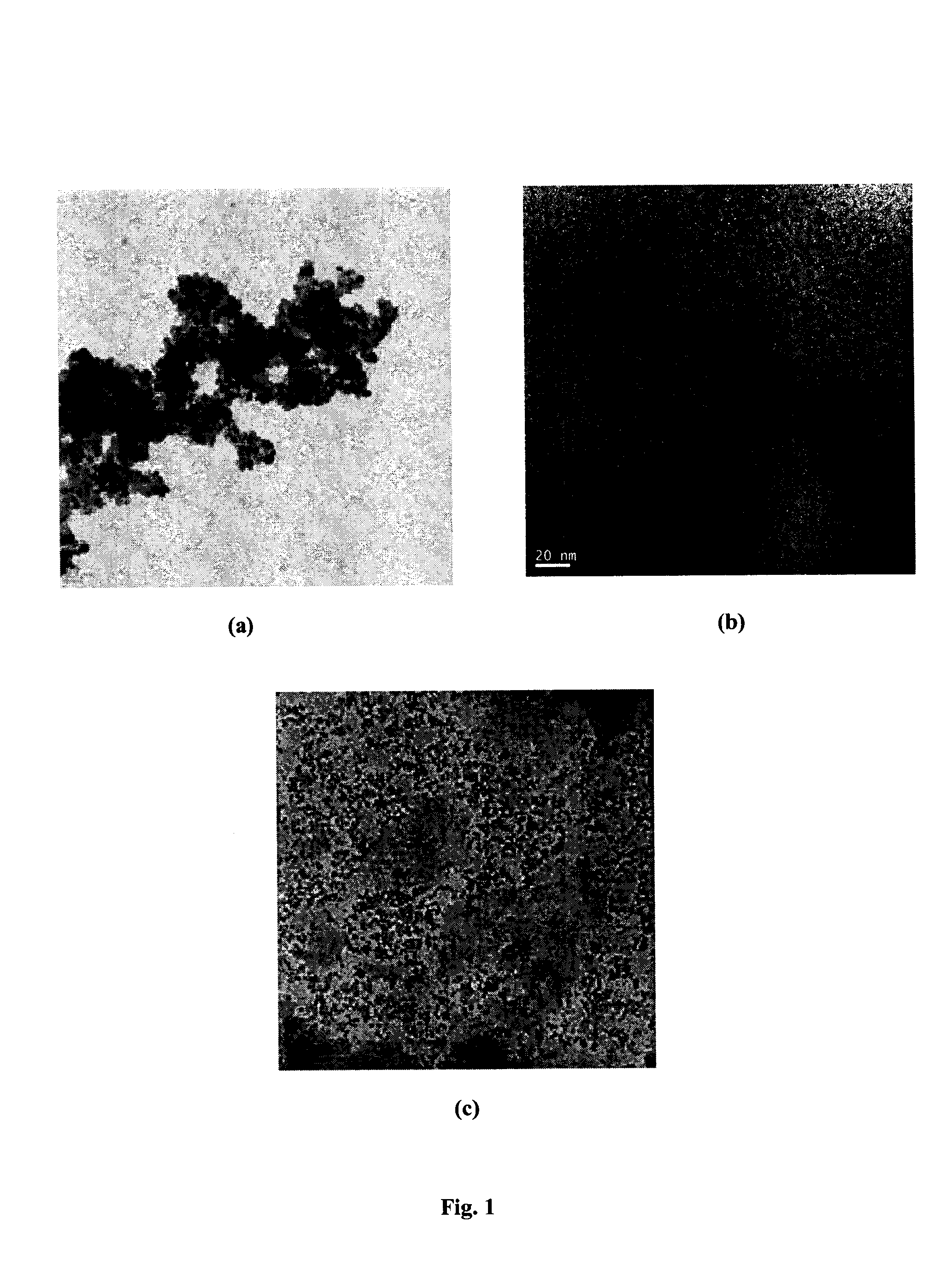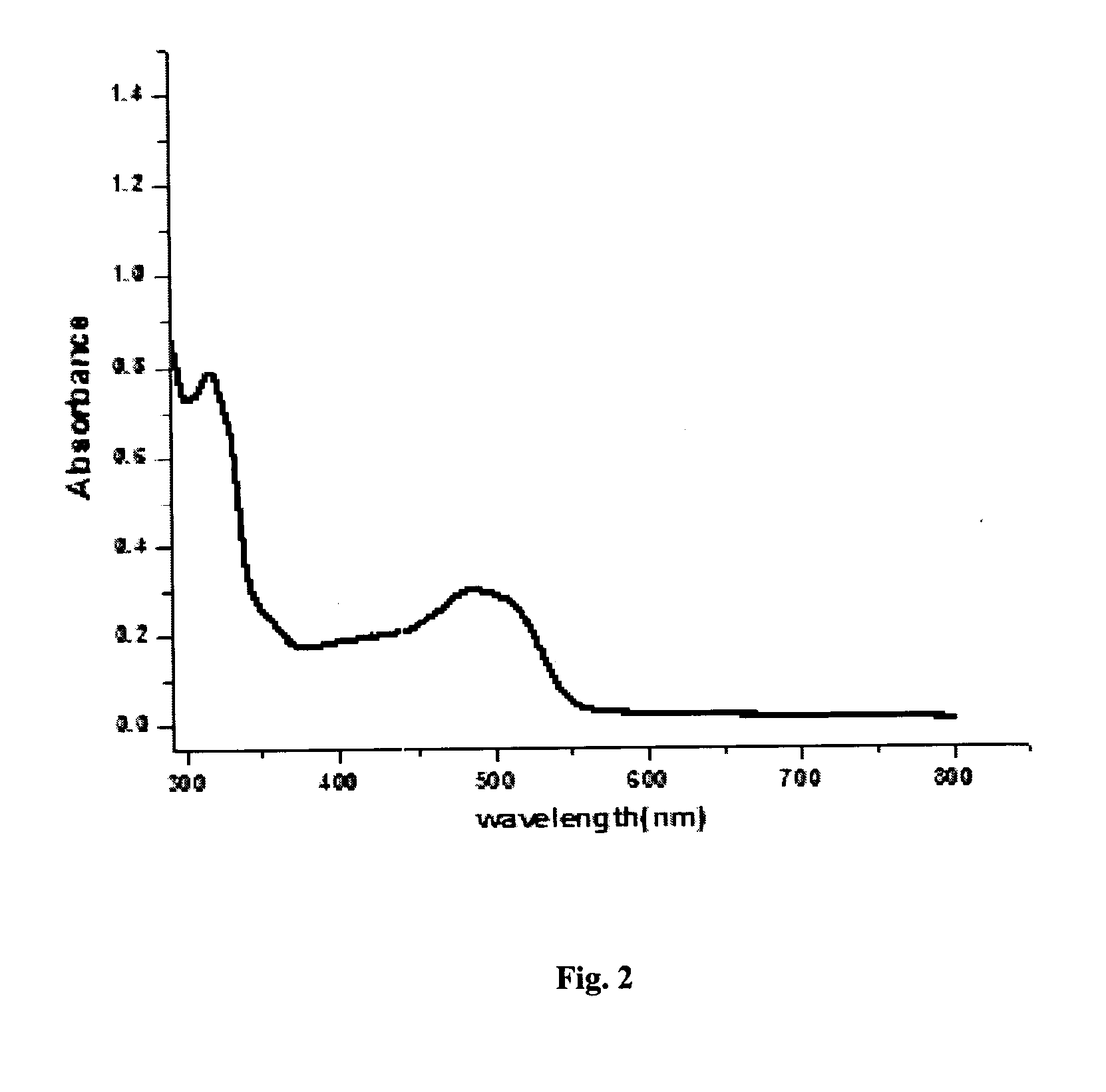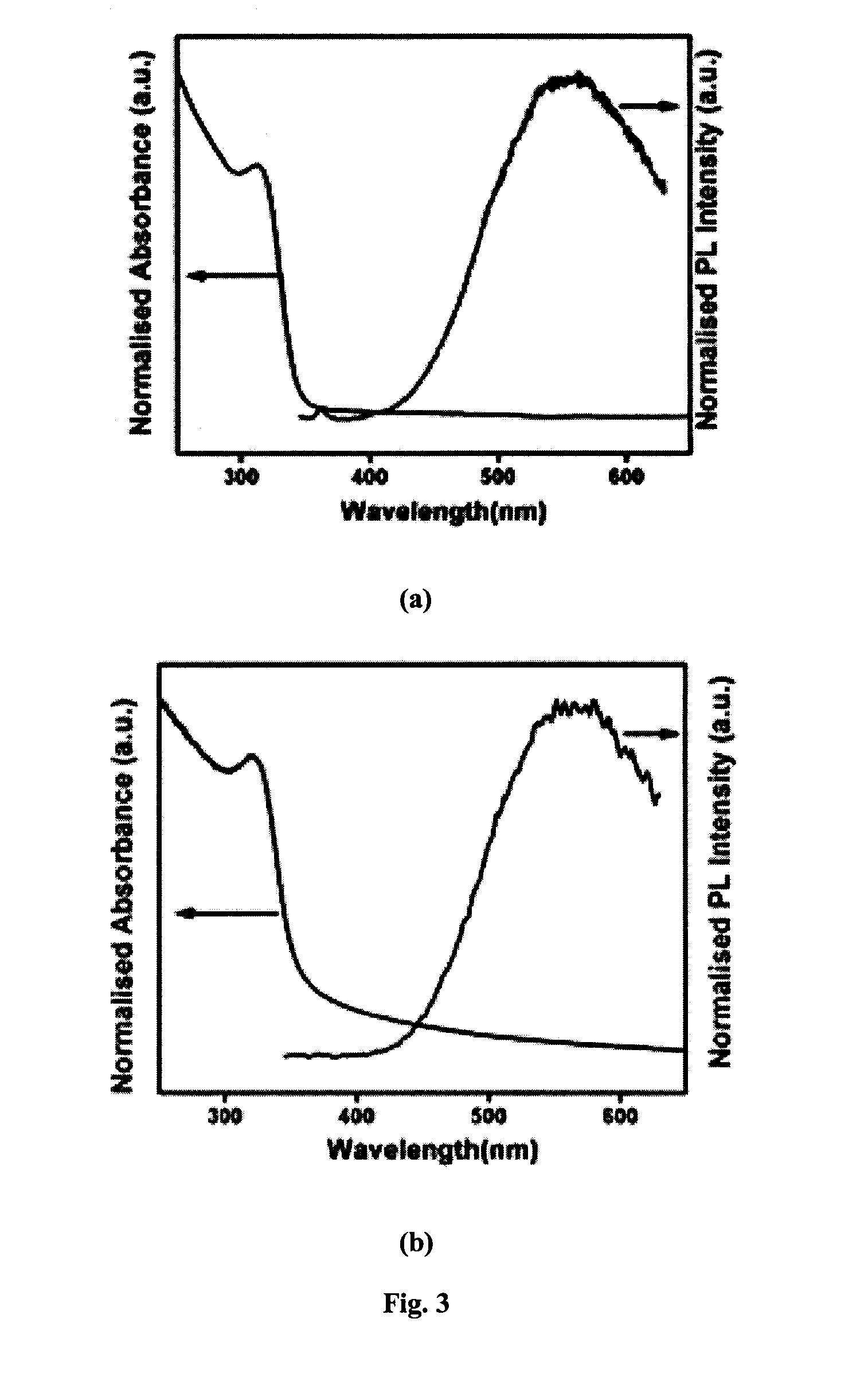Functionalized zinc oxide nanoparticles for photocatalytic water splitting
a technology of photocatalytic water and nanoparticles, which is applied in the direction of organic compounds/hydrides/coordination complexes, physical/chemical process catalysts, metal/metal-oxides/metal-hydroxide catalysts, etc., can solve the problem of long-standing water splitting of visible ligh
- Summary
- Abstract
- Description
- Claims
- Application Information
AI Technical Summary
Benefits of technology
Problems solved by technology
Method used
Image
Examples
example 1
Preparation of ZnO Nanoparticles
A. By Precipitation Method
[0059]For smaller nanoparticles, precipitation method was followed. In a typical procedure, KOH (56 mM, 75 mL) in methanol was refluxed at 60° C. for 30 min. In another reaction mixture, Zn(OAc)2.2H2O (56 mM, 25 mL) in methanol was prepared by stirring at room temperature (25° C.). The dissolved solution of zinc acetate was then added drop wise through an addition funnel into the refluxing KOH solution maintained at 60° C. with vigorous stirring. The formation of ZnONPs started immediately and the solution becomes clear.
B. By Sol Gel Method
[0060]Bigger ZnONPs were synthesized by sol gel method. Zinc acetate dihydrate (0.02389 mol) was treated with ethanol (144 mL) at 60° C. This was completely dissolved in about 30 min. Oxalic acid dihydrate (0.04878 mol) was dissolved in ethanol (98 mL) at 50° C. and was added slowly under stirring to the warm ethanolic solution of zinc acetate. A thick white gel formed, which was kept for d...
example 2
Preparation of Conjugated Organic Moiety
A. Synthesis of (E)-4-((2-hydroxynaphthalen-1-yl)diazenyl)benzoic acid (4ABBN)
[0061]To a solution of 4-amino benzoic acid (1.35 g, 0.009843 moles), distilled water (8.44 mL) and concentrated sulfuric acid (2.1 mL) was added drop wise. The mixture was cooled to 0° C. A solution of sodium nitrite (1.006 g, 0.01458 moles) in 3 mL of distilled water maintained at 0° C., was added to the above cold mixture drop wise with good stirring. After 20 min the diazotization was complete, which was verified by adding a solution of 4-(N,N-dimethylamine) benzaldehyde which generated colour if undiazotized aromatic amine is still present. To the diazotized product obtained, β-naphthol (2.012 g, 0.01395 moles) was added very slowly with vigorous stirring over 15 min. The reaction mixture was further stirred for 1 h and left to stand overnight (10 hr). A reddish orange coloured precipitate was observed which was purified by column chromatography.(Scheme 1).
B. Sy...
example 3
Preparation of Photocatalyst Composition no—4ABBN Composite
[0066]4-((2-hydroxynaphthalen-1-yl) diazenyl) benzoic acid (23 μmol was added in-situ during the synthesis of ZnO by precipitation method (0.142 mmoles), to the alkaline zinc acetate solution. The solution was stirred in methanol at room temperature (27° C.) for 1 h. The product (ZnOPP-4ABBN) was washed with methanol, centrifuged and collected. Similarly, 0.38 mmoles of 4ABBN was added to ZnONPs synthesized by sol-gel method (10 mmoles). The solution was stirred in ethyl acetate at 27° C. for 3 h and the product (ZnOSG-4ABBN) was collected after the removal of excess solvent under vacuum. As control samples, 1 wt % Pt cocatalyst loaded pristine ZnO as well as ZnOPP-4ABBN and ZnOSG-4ABBN also were synthesized by wet impregnation. Typically, 51 mg of H2PtCl6.6H2O was dissolved in minimum quantity of water and added to 198 mg of ZnO prepared by different methods, dried at 80° C. and finally calcined at 400° C. for 2 h. Appropri...
PUM
| Property | Measurement | Unit |
|---|---|---|
| Temperature | aaaaa | aaaaa |
| Time | aaaaa | aaaaa |
Abstract
Description
Claims
Application Information
 Login to View More
Login to View More - R&D
- Intellectual Property
- Life Sciences
- Materials
- Tech Scout
- Unparalleled Data Quality
- Higher Quality Content
- 60% Fewer Hallucinations
Browse by: Latest US Patents, China's latest patents, Technical Efficacy Thesaurus, Application Domain, Technology Topic, Popular Technical Reports.
© 2025 PatSnap. All rights reserved.Legal|Privacy policy|Modern Slavery Act Transparency Statement|Sitemap|About US| Contact US: help@patsnap.com



